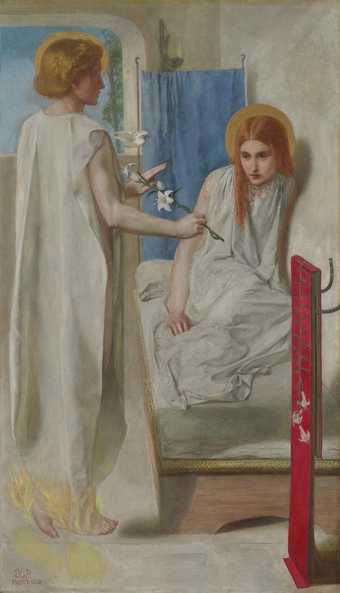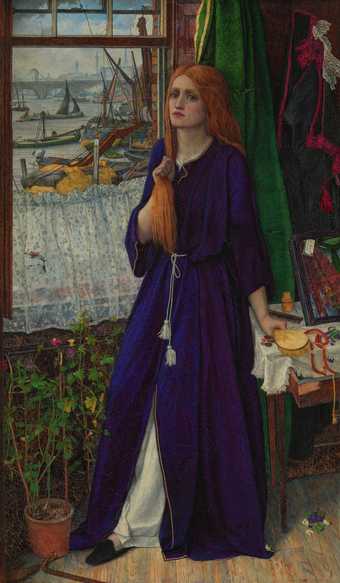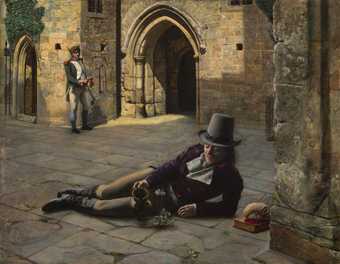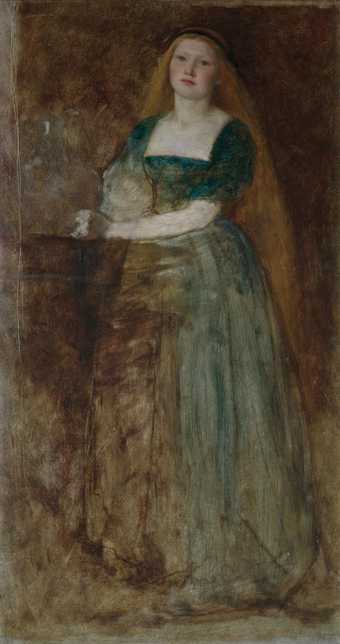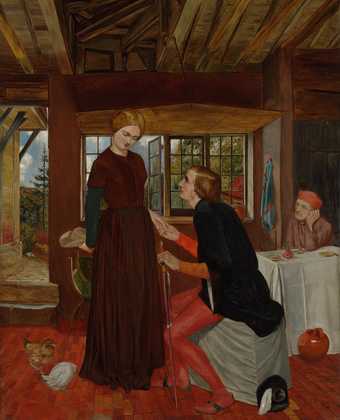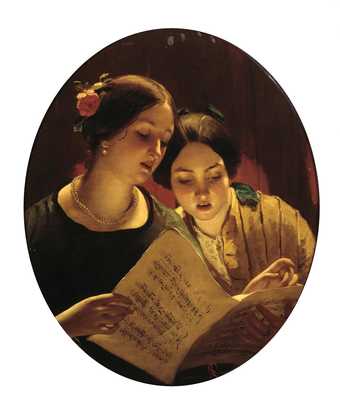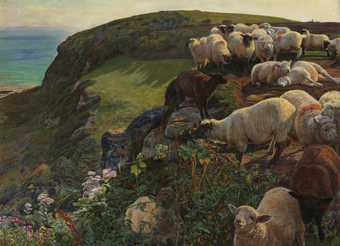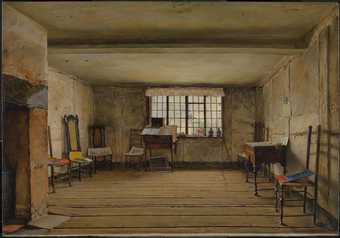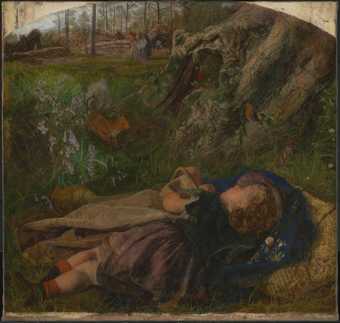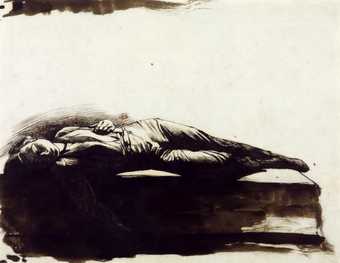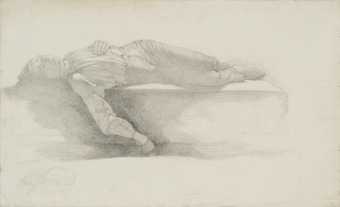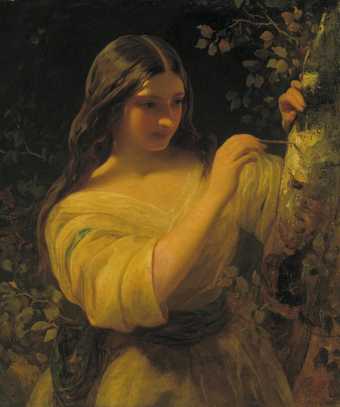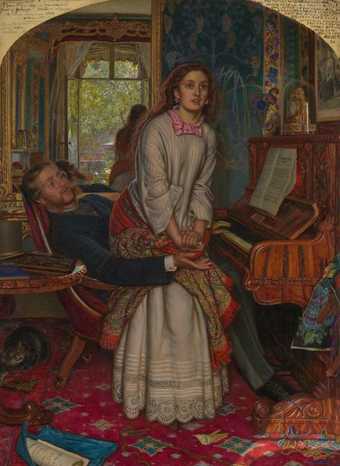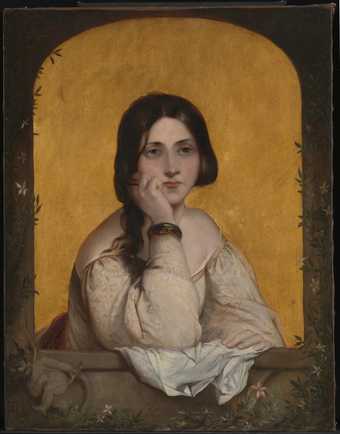
In Tate Britain
- Artist
- Henry Wallis 1830–1916
- Medium
- Oil paint on canvas
- Dimensions
- Support: 622 × 933 mm
frame: 905 × 1205 × 132 mm - Collection
- Tate
- Acquisition
- Bequeathed by Charles Gent Clement 1899
- Reference
- N01685
Summary
Chatterton is Wallis's earliest and most famous work. The picture created a sensation when it was first exhibited at the Royal Academy in 1856, accompanied by the following quotation from Marlowe:
Cut is the branch that might have grown full straight
And burned is Apollo's laurel bough.
Ruskin described the work in his Academy Notes as 'faultless and wonderful'.
Thomas Chatterton (1752-70) was an 18th Century poet, a Romantic figure whose melancholy temperament and early suicide captured the imagination of numerous artists and writers. He is best known for a collection of poems, written in the name of Thomas Rowley, a 15th Century monk, which he copied onto parchment and passed off as mediaeval manuscripts. Having abandoned his first job working in a scrivener's office he struggled to earn a living as a poet. In June 1770 he moved to an attic room at 39 Brooke Street, where he lived on the verge of starvation until, in August of that year, at the age of only seventeen, he poisoned himself with arsenic. Condemned in his lifetime as a forger by influential figures such as the writer Horace Walpole (1717-97), he was later elevated to the status of tragic hero by the French poet Alfred de Vigny (1797-1863).
Wallis may have intended the picture as a criticism of society's treatment of artists, since his next picture of note, The Stonebreaker (1858, Birmingham City Museum and Art Gallery), is one of the most forceful examples of social realism in Pre-Raphaelite art. The painting alludes to the idea of the artist as a martyr of society through the Christ-like pose and the torn sheets of poetry on the floor. The pale light of dawn shines through the casement window, illuminating the poet's serene features and livid flesh. The harsh lighting, vibrant colours and lifeless hand and arm increase the emotional impact of the scene. A phial of poison on the floor indicates the method of suicide. Following the Pre-Raphaelite credo of truth to nature, Wallis has attempted to recreate the same attic room in Gray's Inn where Chatterton had killed himself. The model for the figure was the novelist George Meredith (1828-1909), then aged about 28. Two years later Wallis eloped with Meredith's wife, a daughter of the novelist Thomas Love Peacock (1785-1866).
Two preparatory drawings exist for the picture, both in the Tate collection (Tate http://www.tate.org.uk/servlet/AWork?id=15908T01721 and http://www.tate.org.uk/servlet/AWork?id=15909T01722.).
Further reading:
Leslie Parris, Ed., The Pre-Raphaelites, exhibition catalogue, Tate Gallery, London 1984, reprinted 1994, pp.142-144, reproduced p.143, in colour.
Elizabeth Prettejohn, The Art of the Pre-Raphaelites, London 2000, pp.192-3, reproduced p.193, in colour.
Christopher Wood, The Pre-Raphaelites, London 1994, pp.61-4, reproduced p.68, in colour.
Frances Fowle
December 2000
Does this text contain inaccurate information or language that you feel we should improve or change? We would like to hear from you.
Display caption
This highly romanticised picture created a sensation when it was first exhibited at the Royal Academy in 1856. Thomas Chatterton was a poet whose ‘gothic’ writings, melancholy life and youthful suicide fascinated artists and writers of the 19th century. At an early age, he wrote fake medieval histories and poems, which he copied onto old parchment and passed off as manuscripts from the Middle Ages. The fraud was later discovered. In London he struggled to earn a living writing tales and songs for popular publications. Penniless, he took his own life by swallowing arsenic at the age of 17.
Gallery label, November 2016
Does this text contain inaccurate information or language that you feel we should improve or change? We would like to hear from you.
Explore
- architecture(30,960)
- religious(6,862)
-
- cathedral(741)
- townscapes / man-made features(21,603)
-
- townscape(3,297)
- coat(310)
- candlestick(53)
- actions: postures and motions(9,111)
-
- reclining(814)
- man(10,453)
- corpse(99)
- poisoned(10)
- UK countries and regions(24,355)
-
- England(19,202)
- birth to death(1,472)
You might like
-
Dante Gabriel Rossetti Ecce Ancilla Domini! (The Annunciation)
1849–50 -
John Roddam Spencer Stanhope Thoughts of the Past
exhibited 1859 -
Robert Braithwaite Martineau Picciola
1853 -
Joanna Mary Wells Gretchen
1861 -
Frederic George Stephens The Proposal (The Marquis and Griselda)
c.1850 -
James Sant The Duet
date not known -
William Holman Hunt Our English Coasts, 1852 (‘Strayed Sheep’)
1852 -
Henry Wallis The Room in Which Shakespeare Was Born
1853 -
Arthur Hughes The Woodman’s Child
1860 -
Henry Wallis Study for ‘Chatterton’
c.1856 -
Henry Wallis Study for ‘Chatterton’
c.1856 -
James Sant Rosalind
date not known -
William Holman Hunt The Awakening Conscience
1853 -
Joanna Mary Wells Portrait of Sidney Wells
1859 -
Theodor von Holst The Bride
1842

